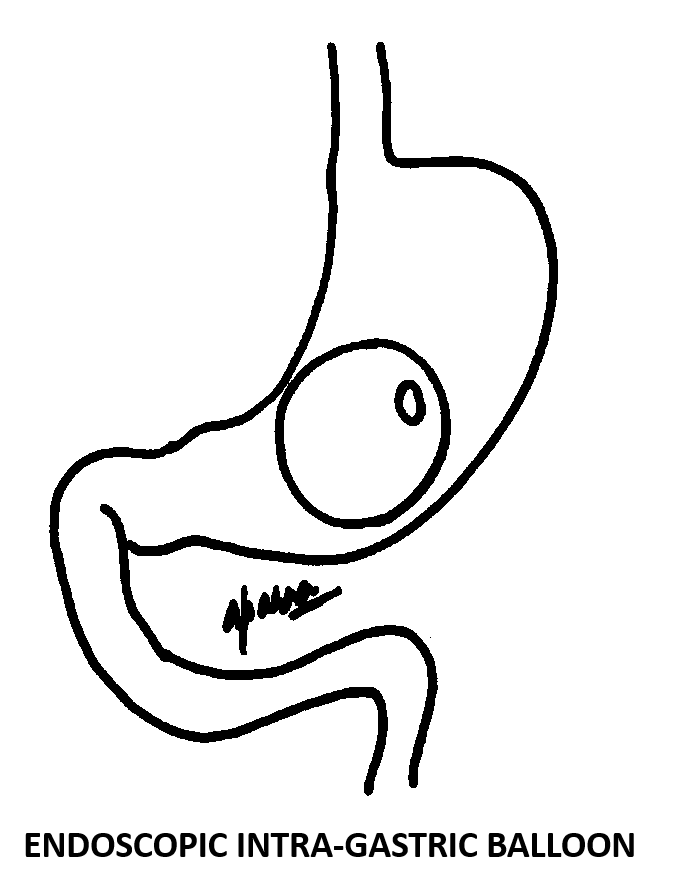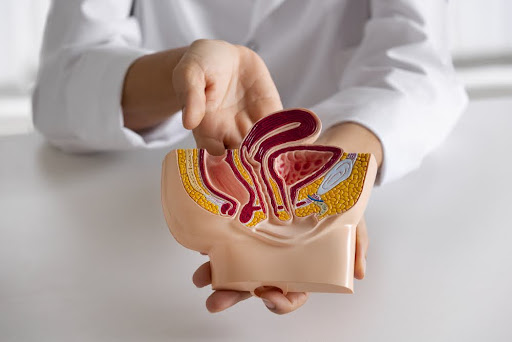
Endoscopic Intra Gastric Balloon Insertion Bangladesh
- Home
- Endoscopic Intra Gastric Balloon Insertion Bangladesh
Endoscopic Intra Gastric Balloon Insertion Bangladesh
What is Intra-gastric balloon therapy?
Intra-gastric balloon insertion is an endoscopic procedure during which a silicon balloon is inserted in the stomach and inflated with fluid.

This video depicts endoscopic intra-gastric balloon insertion-
How does Intra-gastric balloon lead to weight loss?
Intra-gastric balloon is a restrictive procedure. The balloon occupies space in the stomach and thus leads to a decrease in oral intake. Patients tend to feel full even after eating in small quantities.
In this video, Dr. Aparna Govil Bhasker explains how the Intra-gastric balloon insertion helps in weight loss-
Who should undergo intra-gastric balloon insertion?
Intra-gastric balloon insertion is meant for people who need to lose 8 to 10% of their total weight. It is a bridge therapy for those patients who have tried all other conservative methods for weight loss like diet and exercise and not succeeded. On the other hand, these patients are also not candidates for bariatric surgery.
The other group of patients who can benefit from intra-gastric balloon insertion are- patients who are super-super obese and unfit for anaesthesia and hence any major surgical procedure.
Is Intra-gastric balloon a reversible procedure?
Yes, Intra-gastric balloon insertion is a reversible procedure. It does not lead to any permanent alteration in the human body. Depending on the type of the balloon it may need to be removed after 6 or 12 months.
What are the types of intra-gastric balloons?
Presently, in India, we have two types of balloons-
The Orbera balloon- This is a non-adjustable silicon balloon. It is a one-time insertion and needs to be removed after 6 months. It is approved by the US FDA.
The Spatz 3 balloon- This is an adjustable balloon and can be kept inside for a period of one year. As this is an adjustable balloon, it is possible to add more fluid if the weight loss plateaus.
What is the preparation required for intra-gastric balloon insertion?
All investigations as advised by the team need to be done atleast one week prior to the procedure. Patients are kept on a pre-procedure high protein liquid diet for 48 hours. Complete fasting is required for 8 hours before the scheduled procedure.
What is the expected weight-loss after intra-gastric balloon insertion?
The expected weight-loss after intra-gastric balloon insertion is about 8 to 10% of the total body weight. It can be less or more depending on the patient. Post procedure diet and exercise also make a difference.
Does intra-gastric balloon insertion lead to improvement in other diseases associated with obesity?
Yes, intra-gastric balloon insertion leads to significant weight loss which in turn leads to improvement in other diseases associated with obesity such as type 2 diabetes, high blood pressure, dyslipidemia, gout, PCOD, joint pains etc.
What are the side effects of intra-gastric balloon insertion?
Intra-gastric balloon leads to varying degrees of nausea, vomiting, and crampy pain in abdomen in the first few days after insertion. This can be managed with medications and usually tends to settle down in a week or two. At times, it may be necessary to get admitted for a day or two if the symptoms are severe and lead to dehydration. After the first 2 weeks, these symptoms tend to settle down. Some patients may experience acidity like symptoms or acid reflux. There is a small risk of developing ulcers in the stomach and very rarely a perforation due to chronic friction or over-filling of the balloon.
What is the process for removal of intra-gastric balloon?
Intra-gastric balloon removal is done endoscopically under general anesthesia. The balloon is punctured and completely deflated and pulled out with the help of the endoscope.
Is there a chance of weight regain after intra-gastric balloon removal?
Once the balloon is removed, there is no restriction in the stomach. One school of thought feels that it is easier to maintain the weight after reaching a particular target with the help of balloon. However, there is a significant chance for weight regain after balloon is removed.
About Dr. Aparna Govil Bhasker
Dr. Aparna Govil Bhasker is an accomplished Bariatric Surgeon and Laparoscopic GI Surgeon. Extremely passionate about her field of specialization. She completed her MBBS and MS in General Surgery in 2006, from Mahatma Gandhi Institute of Medical Sciences (MGIMS), Sewagram. Set up in 1967 by none other than the first health minister of India, Ms. Sushila Nayar, MGIMS is deeply rooted in Gandhian ethics. Read more


Surgeon in India


Bariatric Surgery: Pros and Cons

Types of Hernias and Their Treatment Options Explained
- Intra-Gastric Balloon Insertion Surgery
- Laparoscopic Adjustable Gastric Banding Surgery
- Gastric Sleeve Surgery / Laparoscopic Sleeve Gastrectomy
- Single Incision Sleeve Gastrectomy Surgery
- Laparoscopic Roux-en Y Gastric Bypass Surgery
- Laparoscopic Banded Roux-en Y Gastric Bypass Surgery
- Laparoscopic Mini Gastric Bypass Surgery /Omega Loop Bypass
- Laparoscopic Sleeve Gastrectomy with Duodeno-Jejunostomy Surgery
- Laparoscopic Duodenal Switch Surgery
- Laparoscopic Sleeve Gastrectomy with Duodenal Ileostomy (SADI) Surgery
- Laparoscopic Revisional/Redo Bariatric Surgery
- Metabolic Surgery for Diabetes
- Terms & Conditions
- Privacy Policy
- Sitemap
